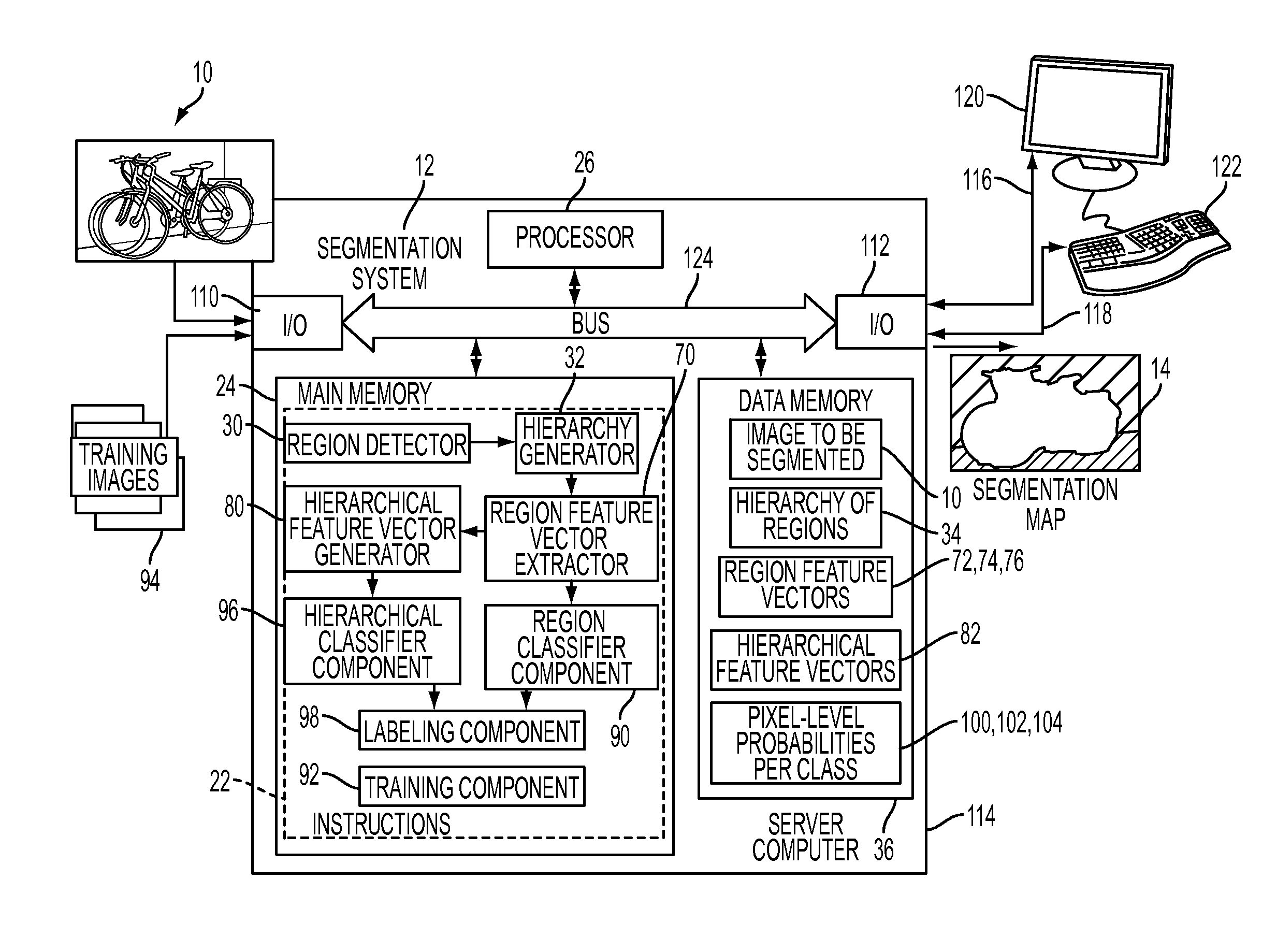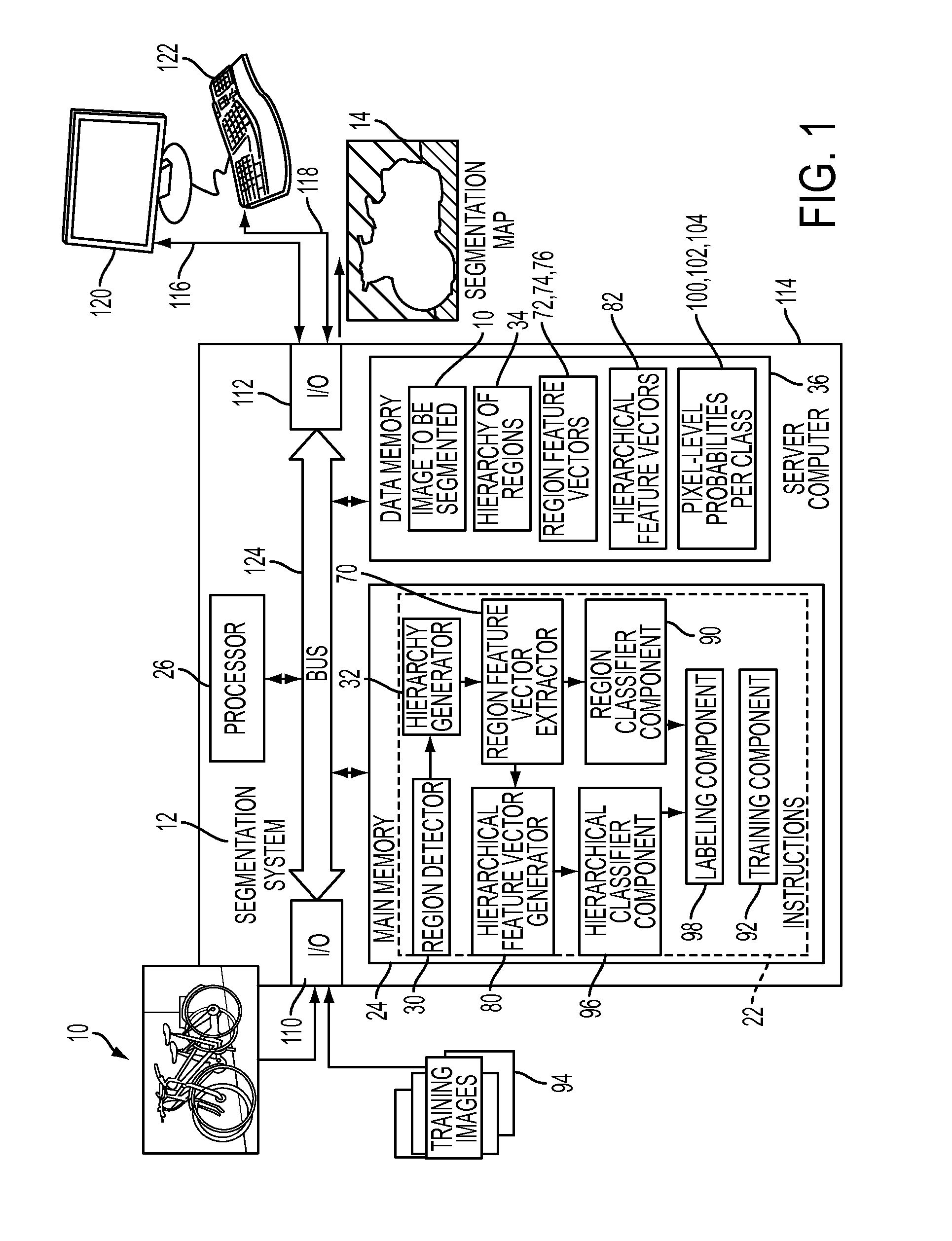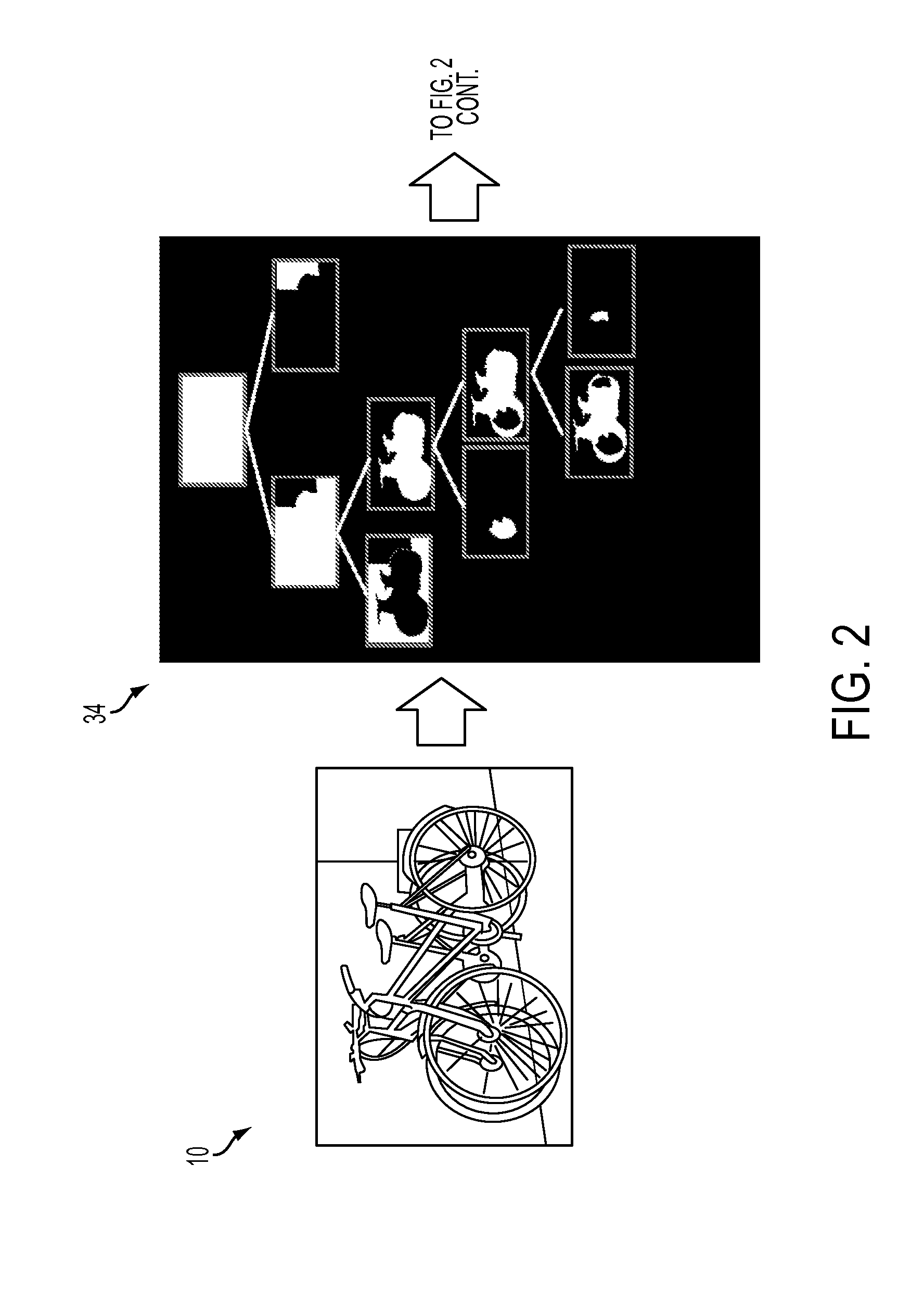Image segmentation using hierarchical unsupervised segmentation and hierarchical classifiers
a hierarchical, unsupervised, image segmentation technology, applied in image analysis, image enhancement, instruments, etc., can solve the problems of incorrect labeling of pixels, inability to scale well to large training sets, and labeling performed
- Summary
- Abstract
- Description
- Claims
- Application Information
AI Technical Summary
Benefits of technology
Problems solved by technology
Method used
Image
Examples
examples
[0079]Results from an implementation of the method show that using the hierarchical structure of the unsupervised segmentation method in conjunction with a triplets classifier improves the segmentation results, as compared to a method that operates on the regions independently.
[0080]The hierarchy of regions was generated using the method of Arbelaez, et al. This method segments an image from the finest level (the leaf layer) to the coarsest level (the root node, which is the entire image), based on the local image brightness, color, and texture consistency. Each layer is a partition of the image. Combining all the regions of all the layers produces the regions considered.
Datasets
[0081]Experiments were run on two different datasets:
[0082]1. The Weizmann dataset: this dataset is composed of images all containing one or several horses. The goal is to segment these images into two regions: horse and background. The dataset was divided into 50 training images, and 278 test images. Images...
PUM
 Login to View More
Login to View More Abstract
Description
Claims
Application Information
 Login to View More
Login to View More - R&D
- Intellectual Property
- Life Sciences
- Materials
- Tech Scout
- Unparalleled Data Quality
- Higher Quality Content
- 60% Fewer Hallucinations
Browse by: Latest US Patents, China's latest patents, Technical Efficacy Thesaurus, Application Domain, Technology Topic, Popular Technical Reports.
© 2025 PatSnap. All rights reserved.Legal|Privacy policy|Modern Slavery Act Transparency Statement|Sitemap|About US| Contact US: help@patsnap.com



